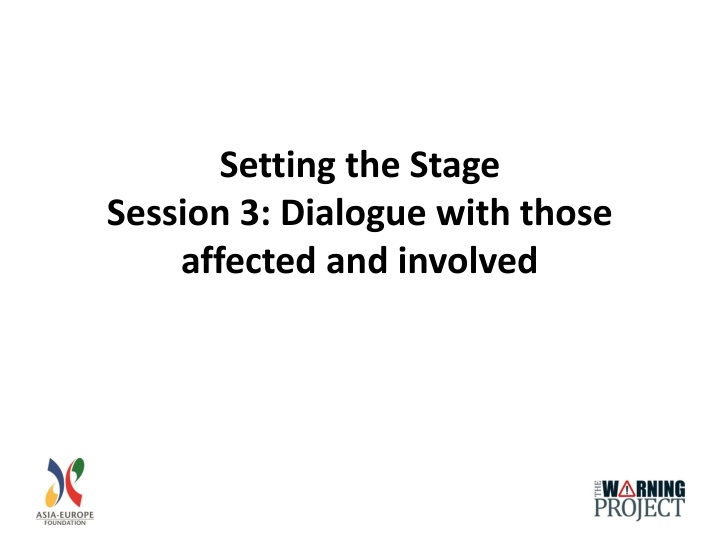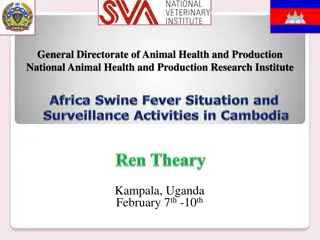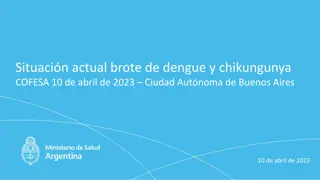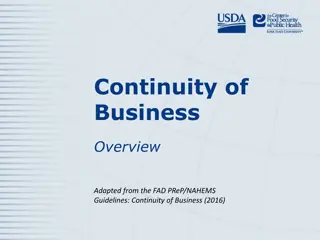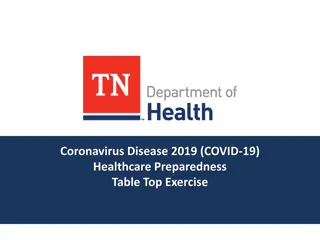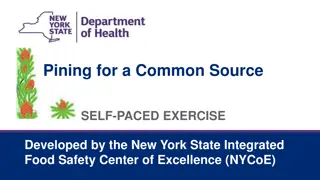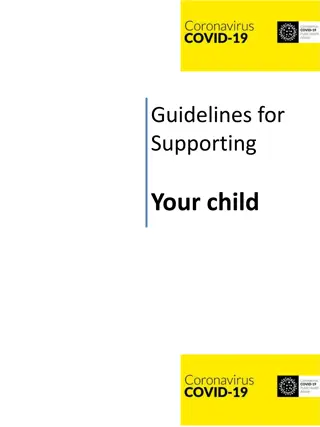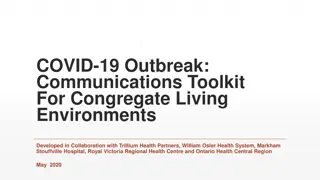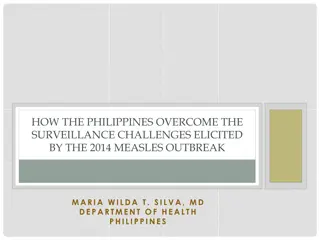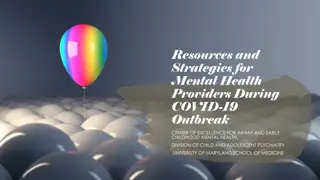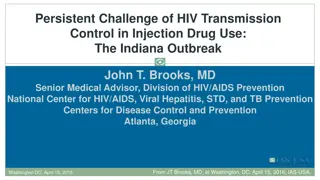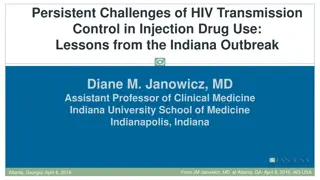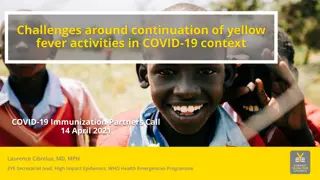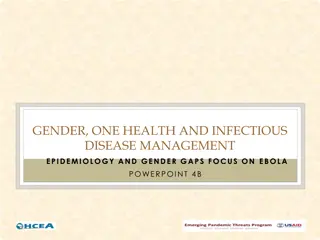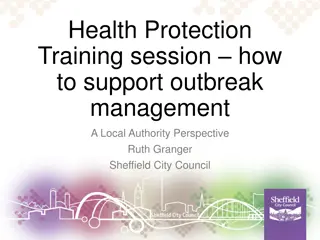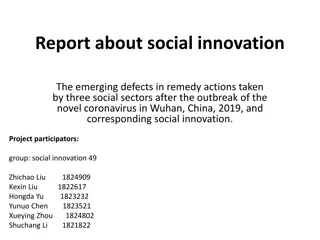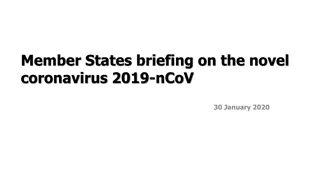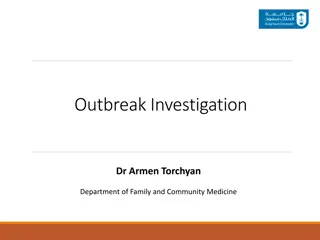Addressing Challenges in Controlling EATEX-D Outbreak
The session explores the challenges in controlling the EATEX-D outbreak, including the death rate, transmission modes, and public response. It delves into specific issues like concentrated cases in Downville and the effectiveness of self-quarantine strategies. The dialogue captured from social media showcases varying opinions and attitudes towards the outbreak, shedding light on the existing risk perceptions. Insights from web analytics and the identified risks emphasize the need for robust support measures and effective risk communication to improve the control strategy's success.
Download Presentation

Please find below an Image/Link to download the presentation.
The content on the website is provided AS IS for your information and personal use only. It may not be sold, licensed, or shared on other websites without obtaining consent from the author.If you encounter any issues during the download, it is possible that the publisher has removed the file from their server.
You are allowed to download the files provided on this website for personal or commercial use, subject to the condition that they are used lawfully. All files are the property of their respective owners.
The content on the website is provided AS IS for your information and personal use only. It may not be sold, licensed, or shared on other websites without obtaining consent from the author.
E N D
Presentation Transcript
Setting the Stage Session 3: Dialogue with those affected and involved
What do we know?(1) There are 1000 cases and 100 deaths -- 10% death rate? EATEX-D is a new illness, does not respond to anti-biotics Threat is worldwide news, creating worldwide concern Likely mode of transmission is food, but also close contact with an infected person Control Strategy: self quarantine of 10,000 potentially infected citizens
What do we know? (2) Concentration of new cases in specific neighbourhood: Downville No difference in risk management/risk communication strategies across the city No obvious reason why behaviour change strategy not working in this area Question: WHY?
Sample Twitter feed out of Downville AlexaT So tired of covering for coworkers with suspected #EATEX-D. Seriously? Take some medicine and get back to the office already! MikeyBOY EATEX-D quarantine? I m a vegetarian!!! #quarantine Nadia28 Downville self-quarantine not so bad. Back home the government would just shoot everyone 100% compliance! #quarantine
Risk Communication Surveillance United through Our Saviour Refugee ME Service starts at 8. Potluck cancelled the EATEX catering ;) BJ Allinatumbo Bring hand sanitizer, all this quarantine stuff is making me a bit nervous Amber Gonzaga The saviour cleans the unwashed, purifies the diseased, soothes the afraid. Fugee Don t forget where you come from BJ all we have is each other.
Web Analytics - Downville Week 1 150,000 30,000 10,000 high Week 2 Searches EATEX-D Official website visits Related social media activity 500 low
What is the biggest risk to the control strategy succeeding? 75% A. Low risk perception B. Inadequate support measures for those in self quarantine C. Criticism of authorities 25% 0% A. B. C.
Towards achieving the behavioural goal, what is your communication priority? A. Information campaign for vulnerable populations B. Partner engagement and coordination C. Communication surveillance eg. Social media monitoring 50% 50% 0% A. B. C.
For those not following self quarantine, what is the likely key to making them do so? 86% A. Threat of prosecution B. Fear based messaging C. Peer pressure 14% 0% A. B. C.
Dialogue with those affected and involved
Desired State Current State
Factors Influencing Behaviour Change Perceived Risk Confidence in measures suggested Confidence in ability to complete measures Risk information source and credibility Social norms and pressures cost of behaviour change 14
Common Errors 2: Literacy Performance Sophisticated information processing skills 5 Higher order information processing skills 4 Minimum skills for everyday life, adequate to complete high school 3 Limited reading skills, trouble with a job application 2 Objective Difficulty reading text, understanding medicine directions 1 16
Common Errors 3 Common Knowledge Effect Tendency to exaggerate how much of THEIR knowledge is shared by others Can t assume public s knowledge base Best practice: real time citizen driven Q/A 17
Perceptions Beliefs Family and society Sources of information Socio-economic status Politics Culture Education
Discussion Ms Fernanda FALERO, Health Promotion and Anthropology Advisor, MSF Spain Mr Daniel SCHMIDT, Adviser, Department of International Public Health, Norwegian Institute of Public Health
Workgroup Task 1: Identifying Barriers to Success
In terms of Dialogue with those affected and involved, rank the most significant barriers to success A. Lack of guidelines and formal listening procedures Inadequate budget and human resources support Weak levels of leadership engagement and endorsement Lack of emergency engagement exercises and training Practical tools and templates to support dialogue Other B. 21% 19% 17% C. 16% 15% 12% D. E. F. A. B. C. D. E. F.
Workgroup Task 2: Recommendations
In terms of dialogue with those affected and involved, rank these abilities in terms of international best practice? A. Gathering and processing the views and perceptions of individuals, partners and communities affected Adapting communication strategies based on dialogue findings Monitoring media and social media, tracking: questions, information needs, points of confusion, rumours. Effective and efficient tools and templates to support the listening process Reflecting community perspectives back into emergency management decision making. Other B. 21% 19% 18% C. 16% 16% D. 10% E. F. A. B. C. D. E. F.
